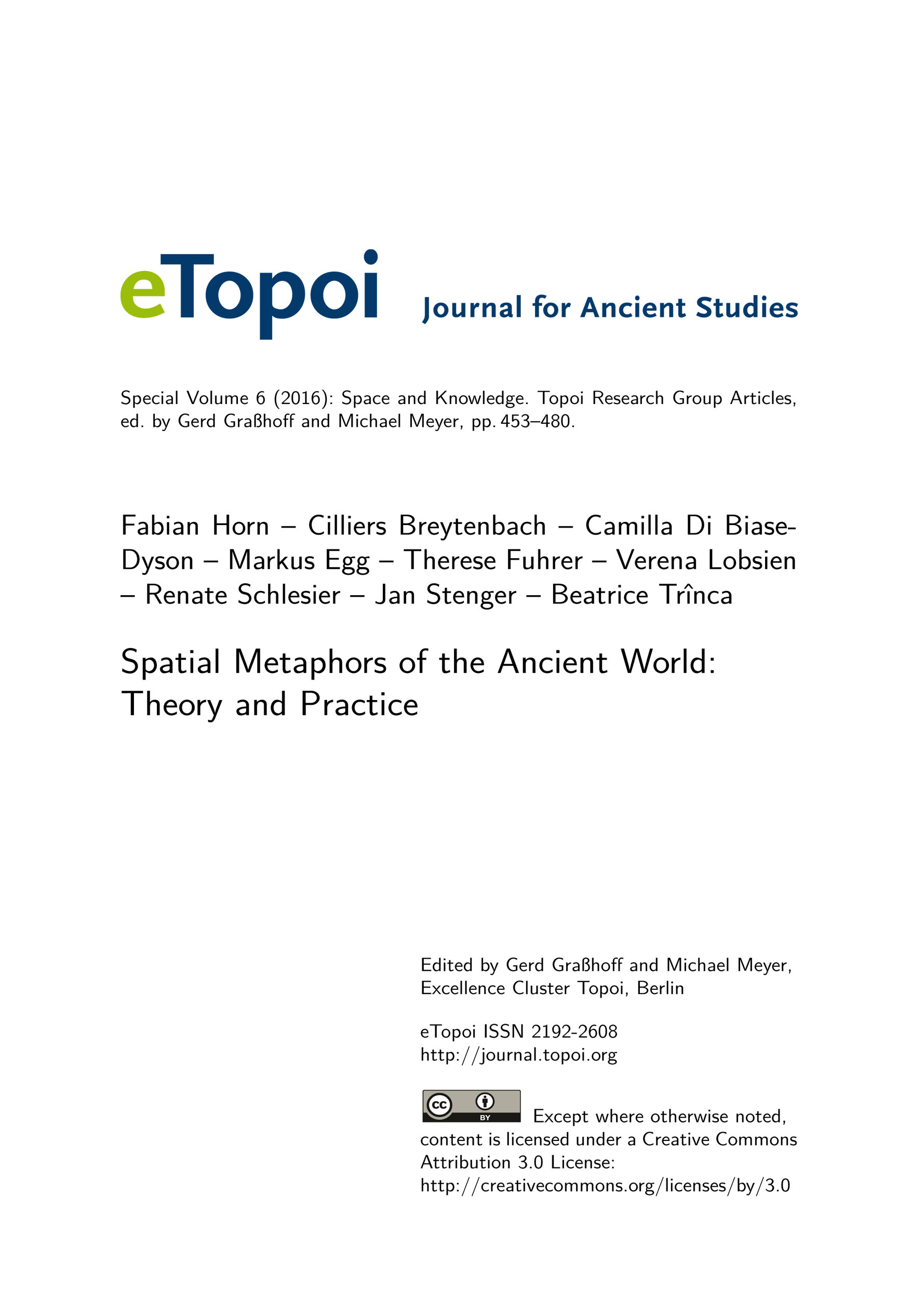Spatial Metaphors of the Ancient World: Theory and Practice
Group C-2 of the Excellence Cluster 264 Topoi Space and Metaphor in Language, Cognition, and Texts is dedicated to the study of spatial metaphors and their functions in texts of different genres, languages, and epochs. This outline of the work of group C-2 takes as its point of departure and theoretical framework a general linguistic typology of spatial metaphors. This outline is followed by a series of case studies ranging from wisdom texts and philosophical treatises to tragedy and from Ancient Egyptian to Shakespearean English. These examples are aimed at illustrating both the challenges and the possibilities of the study and interpretation of spatial metaphors in their respective contexts.
Group C-2 of the Excellence Cluster 264 Topoi Space and Metaphor in Language, Cognition, and Texts is dedicated to the study of spatial metaphors and their functions in texts of different genres, languages, and epochs. This outline of the work of group C-2 takes as its point of departure and theoretical framework a general linguistic typology of spatial metaphors. This outline is followed by a series of case studies ranging from wisdom texts and philosophical treatises to tragedy and from Ancient Egyptian to Shakespearean English. These examples are aimed at illustrating both the challenges and the possibilities of the study and interpretation of spatial metaphors in their respective contexts.

